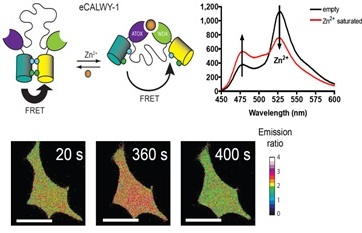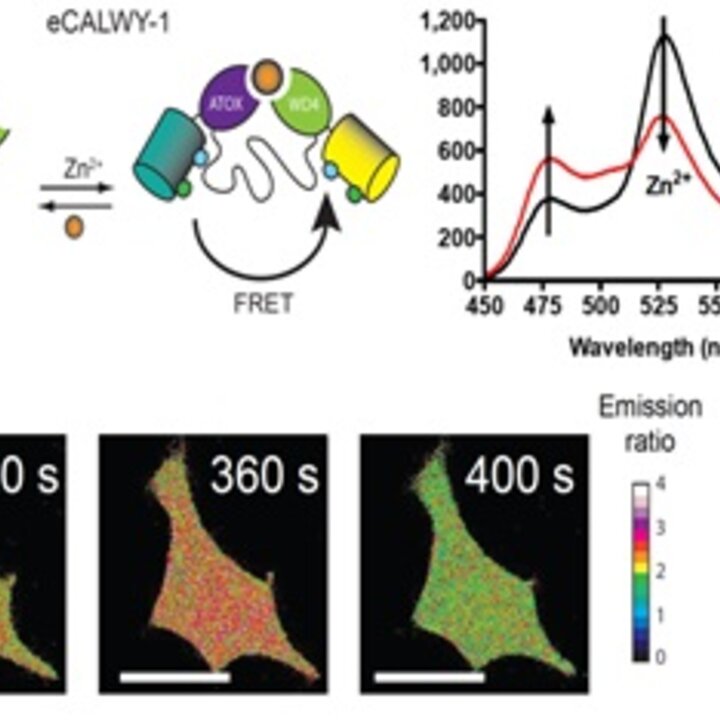
These ratiometric, genetically鈥揺ncoded sensors are ideally suited to monitor molecular processes in single living cells with high spatial and temporal resolution. A modular design strategy based on the principle of mutually exclusive domain interactions was established, that allows rational sensor design and easy exchange of sensor components. Current research in this area focusses on sensors for multicolor imaging and the development of analogous sensors based on BRET (Bioluminescence Resonance Energy Transfer).
Key words
Cell biology, biosensors, intracellular signaling, protein engineering, directed evolution, metal homeostasis, neurological diseases and cancer
Key publications
- Aper, S.J.A. & Merkx, M. (2016). Rewiring multi-domain protein switches : transforming a fluorescent Zn2+-sensor into a light-responsive Zn2+ binding protein. ACS Synthetic Biology, 5(7), 698-709
- Hessels, A.M., Chabosseau, P., Bakker, M.H., Engelen, W., Rutter, G.A., Taylor, K.M. & Merkx, M. (2015). eZinCh-2: a versatile, genetically-encoded FRET sensor for cytosolic and intra-organelle Zn2+ imaging. ACS Chemical Biology, 10(9), 2126-2134
- J.L. Vinkenborg, T.J. Nicolson, E.A. Bellomo, M.S. Koay, G.A. Rutter, and M. Merkx Imaging of intracellular free Zn2+ in real time using genetically-encoded FRET sensors Nature Methods (2009) 6, 737-740
Working on this topic
- Dr.ir. Stijn Aper
- Drs. Martijn van Rosmalen
